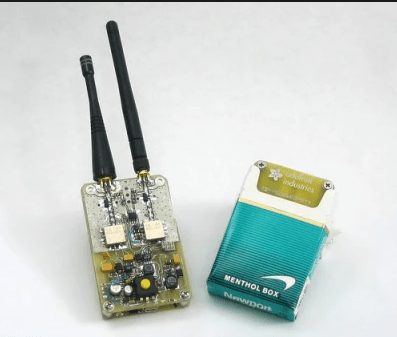Madness: Proposal to Jam Cell Phones in Schools


The debate about mobile phones in schools is a heated one, and multiple states in Australia have already banned their use during school hours. However, some are considering using mobile phone jamming technology to ensure compliance with the ban. In theory, jammers work by blocking the signal between a mobile device and the cell tower, effectively rendering the device useless. However, the use of jammers in schools would be dangerous and impractical.
Firstly, jammers not only block signals from students’ phones, but for everyone in the area, including emergency services. This can put people’s lives at risk in case of an emergency. Secondly, jammers are illegal in many countries, including Australia. Using them would not only be breaking the law but also setting a terrible example for students.
Thirdly, mobile phones can be a valuable tool in the classroom, aiding in research and communication. Teachers can also use them to facilitate learning and engagement in the classroom. Banning them outright does not allow for any kind of flexibility or benefit.
Lastly, enforcing a ban using jammers would be difficult and impractical in practice. Jammers are expensive and require constant monitoring and maintenance. Additionally, there is no guarantee that students wouldn’t find ways to circumvent them, rendering the ban useless.
In conclusion, using mobile phone jamming technology to enforce a ban on mobile phones in schools is not a viable solution. It would not only be illegal and dangerous but also impractical and ineffective. Instead, schools and educators should find ways to work with students to use mobile phones responsibly and effectively in the classroom.
CELLULAR JAMMING 101
In general, mobile phone jammers work in a relatively simple fashion. They simply random noise broadcast radio frequency signals on the same frequencies used by cellular networks. If the signal from the jammer is powerful enough, it will drown out the signals from cellular base stations, and stop phones from making contact with the network. Typically, broadcasting noise at high power across cell phone channels is all that’s required to successfully jam all communication.

Depending on the amount of power you put out, and the antennas you use, you can vary the area affected by your jammer. Of course, measuring this area is an inexact science. In much the same way you can’t stop your home WiFi network from reaching outside the front gate, you can’t readily limit a cell phone jammer’s output to, say, the boundary of a schoolyard.
And therein lies the problem with using cellphone jammers in schools. Given that most schools are in built-up areas, Lorain High School hallwaythere is a high likelihood of jammers spilling over to mobile phone users in surrounding homes and businesses. The outcomes would be profoundly negative in all cases. At best, residents and workers would be deprived of access to connectivity they need to do their jobs and pursue their very lives. At worst, emergency calls could fail to connect, and lives could be put on the line.
It’s for this reason that cellphone jamming is very much illegal in Australia, and most everywhere else for that matter. It doesn’t matter whether you want to jam signals in your own home or business, or just have a jammer in your pocket to keep your devices in the dark on the go. Owning, using, or supplying a jammer is illegal in Australia. It’s thanks to a permanent ban put in place by the Australian Communications and Media Authority.
Interestingly, though, there is a limited exception to the permanent ban, and there has already been a live trial jamming technology within the state of NSW. Via a special exception granted by the ACMA, the government has implemented mobile phone jammers in the Lithgow and Goulburn Correctional Centers. Since mobile phones may enter a prison as contraband, the jammers act as an extra measure to help prevent their use. The jammers were first trialled in Lithgow beginning in 2013. The trial aimed to determine whether the jammers would unduly interfere with regular mobile phone users outside the jail. After the trial proved successful, an ongoing authorization was granted in 2018. A trial at Goulburn Correctional Center is ongoing. In this case, the Goulburn facility exists in a more populated area, and thus there is a greater risk of the jammers causing problems for surrounding residents. As per requirements of the ACMA, the devices used in Goulburn may not cause radio emissions above -128.5 dBm/kHz outside the prison facility. The intention of this measure is to make sure legitimate phone users outside the prison are not affected by the jammer.
All the Way Down: Problems Galore
While the authorities have largely supported the use of jammers in prisons, schools are another thing entirely. Jammers would affect students, teachers, and staff alike. They would also affect parents at school drop off, and any contractors working in or delivering to the school. Few of these people would expect to be cut off from their phone service, but jammers don’t discriminate.

The blanket use of jammers in schools would thus present concerning safety issues. Any emergency calls would have to be made via landline. This could introduce great delays if somebody is injured out on a playground, on the outskirts of the school, or in a building without a phone line. Indeed, schools these days have far fewer landline phones due to the rise of the mobile phone. Plus, these are not accessible to students or visitors, either. It would be a tragedy for a student to suffer a medical emergency and not have help arrive in time because a jammer was blocking calls.
There are issues with the realities of jamming capability, too. Strong jamming will leak beyond school grounds and cause condemnation from surrounding residents. Meanwhile, if jamming is done conservatively, the jammers may not be effective at their job. Industrious teens with smartphones would readily find any jamming blackspots within days. In fact, you could likely map areas where jamming had failed by taking a drone up and plotting out clusters of disaffected teenagers.
WAIT, WHAT?
Curiously, there has been little talk of the specifics of the policy. However, one thing stands out: there has been talk of a proposal by a company referred to as “Educell” which has no visible online presence we could find. Speaking to media, NSW Labor Party leader Chris Minns also hinted that emerging technology could block students from making calls, texting, and using the internet, while allowing emergency access to those with medical conditions. If that is the case, that would require some kind of advanced cellular device within the school itself. It would have to force student phones across all networks to connect to it in place of existing conventional cell sites. Only then could it allow emergency calls while blocking other uses.
It seems unlikely such a device could fit within any school budget, nor gain the approval of network carriers to effectively pull a man-in-the-middle attack on their subscribers. It would also require a continually-updated white list to allow staff to use their devices while blocking those of students. Any visitors to the school would also be subject to blocking unless they had their number whitelisted as well. Alternatively, such a system could operate on a blacklist method, but then students could simply buy a new SIM card or provide the school with a fake number to avoid being subject to the restrictions.
Neither Hackaday nor the ACMA has seen detailed technical specifications on Educell’s tools. One suspects such flexible phone banning tools are more of a nice-to-have idea, rather than something that is readily practical with solutions available on the market.
Check Your Reality: A Reminder to Stay Grounded
In other states, schools have implemented simple and inexpensive measures to restrict phone use in class. Teachers have been given disciplinary authority to punish students for using phones during class time. Some schools have required students to keep their phones in lockers or special Faraday cage-like pouches that make the devices non-operable. These measures effectively discourage phone usage during school hours without imposing any negative effects on the surrounding community. Staff, parents, and visitors remain free to use their phones for work purposes or emergencies.
The proposal to use jammers in schools has been met with much criticism, with some comparing the potential treatment of students to that of prisoners. Apart from ethical concerns, there are also technical limitations to the implementation of this proposal. As a result, it may lead to a more conventional ban on phones in schools. However, if such a proposal is still pursued, it is expected to encounter many challenges and discomfort for all parties involved.








